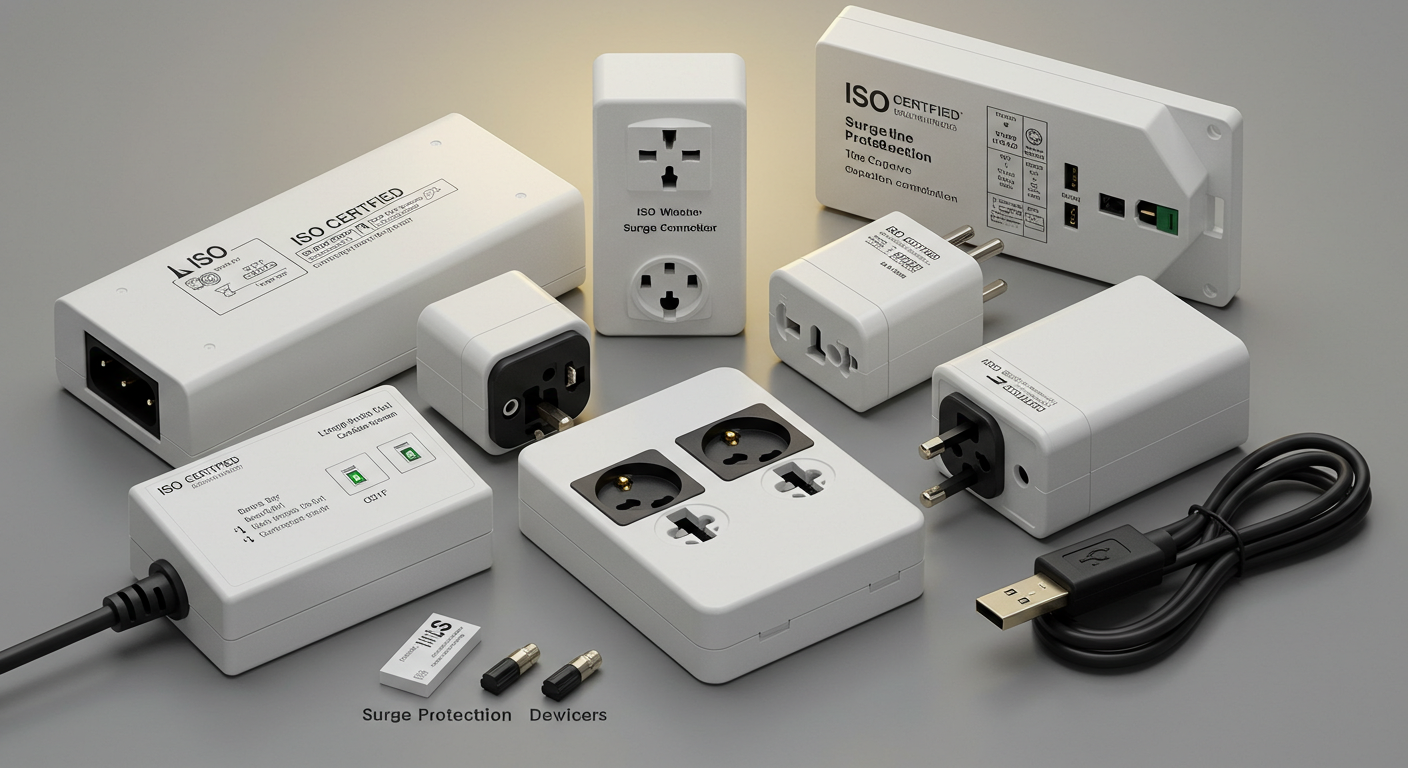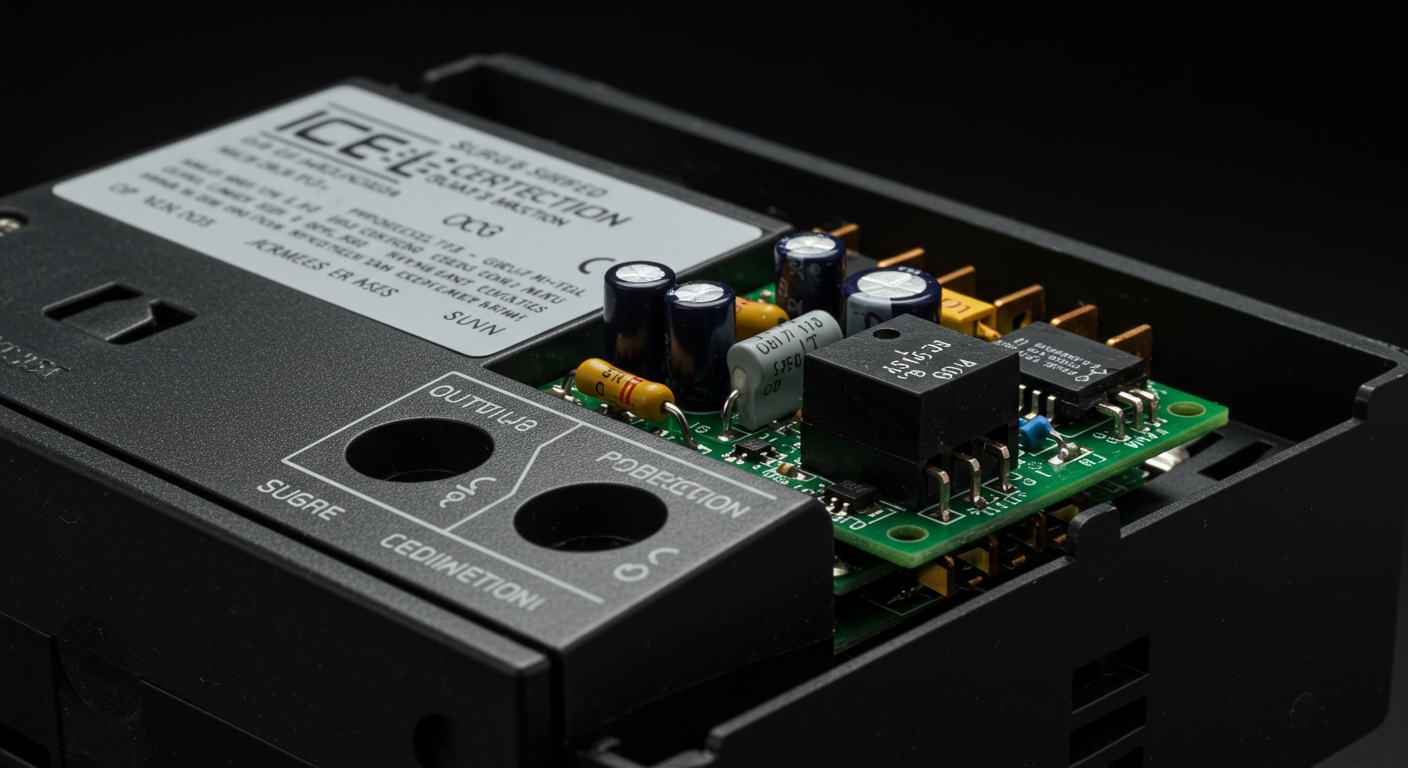Smart Grid Surge Protective Devices Represent Special Equipment
Smart Grid Surge Protective Devices constitute specialized electrical components that defend systems from sudden voltage peaks that come from various grid sources, including lightning hits and switching actions, and network faults. Although short-lived, these voltage spikes create substantial harm to delicate equipment, resulting in both repair expenses and system stops.
The Importance of SPDs in Smart Grids
Surge Protection Device for Home -BT BCM 50 RM of today maintains its interconnected nature because of digital communication systems, which drive its operation. Its intricate structure generates higher vulnerability to brief transient occurrences. SPDs play a crucial role in:
- Critical infrastructure protection remains essential because SPDs provide extended operational life and operational reliability to transformers, along with substations and communication lines.
- Power Quality becomes enhanced by the prevention of disturbances, which degrade equipment performance.
- The deployment of surge protection devices helps decrease the frequency of grid failures that stem from surge-related events.
Technical Considerations in SPD Selection
The choice of SPD depends on full comprehension of technical specifications, which leads to maximum protection potential.
SPD Categories and Standards
The classification system for SPDs depends on the discharge capacity logics for specific applications.
- Type 1 SPDs function as direct lightning protection devices since they conduct high surge currents near the service entrance.
- The second category of Class II models protects distribution panels from switching surges and indirect strikes related to lightning.
- The protection offered by Class III (Type 3) covers sensitive equipment components at their specific locations.
- Electrical protection devices must fulfill IEC 61643-11 and UL 1449 standards to maintain their reliability as well as effectiveness.
Surge Current Capacity
Surge current capacity describes the maximum levels of impulse current denoted as Iimp (impulse current) along with the nominal discharge current In which an SPD can manage before breaking down. The combination of 12.5kA Iimp and 25kA In indicates this SPD is suitable for areas with high risk.
Voltage Protection Level (Up)
An SPD regulates protective equipment voltage let through by limiting it to the maximum allowed value known as Up. The protection strength of SPD increases when the Up value decreases.
Response Time (Ta)
The response time describes how long an SPD needs to activate and respond to abnormal voltage increases. A shortened response time helps decrease the time equipment remains exposed to threatening voltages.

Emerging Trends in Smart Grid Surge Protection
Surge protection strategies benefit from the revolutionary impact that smart technologies bring to SPD systems.
IoT-Enabled Surge Protection
The Internet of Things (IoT) features in SPD systems enable them to send live surge event information that streamlines preventive maintenance operations and quick emergency responses to security hazards.
Predictive Maintenance
By using advanced analysis techniques combined with machine learning algorithms, SPDs monitor historical and present data to forecast equipment breakdowns before damage occurs, thus enabling early corrective action for lower operational interruption risk.
Smart Surge Arresters
The combined devices use smart fuse protection methods that integrate modern diagnostic systems and offer users remote functionality alongside basic surge protection features.
Applications of SPDs in Smart Grids
The deployment of SPDs as part of smart grids occurs throughout different grid components to provide extensive protection measures.
Renewable Energy Integration
SPDs protect DC systems and inverters, which function in renewable power systems, against surge disturbances caused by fluctuating weather patterns.
Smart Grid Communication Systems
Surges attack the data transmission systems through communication lines, causing disruptions to data flow. The protection of communications lines through SPDs ensures continuous operational connectivity in the power grid.
Control Systems and Automation
When surges enter the system, they create problems that reduce control system performance. The reliability of automation processes depends on the installation of SPDs.
Distribution Lines
Footing and distribution cables are susceptible to surges originating from lightning and switching operations. SPDs are installed along these lines for the safeguarding of the entire distribution network.
Best Practices for SPD Implementation
Here are some considerations of the best practices that you may use to enhance the formulation and implementation of SPDs:
• Interactive and effective evaluation: A thorough examination of the grid configuration should be made, where the identification of sources of surge, as well as possible weaknesses, should be established.
• Location: Fix SPDs in regions such as service entries, substations, and distribution or distribution panels.
• Normal check-ups: Conventional inspection and basic tests on SPDs must be done to check for their viability to work appropriately and be replaced if they are worn out.
• Integration with Monitoring Systems: Integrate ESP with the monitoring systems used to monitor the surge levels and the health of SPDs to ensure that necessary surge events are scheduled and that the SPDs need maintenance.
How to Choose Smart Grid Surge Protective Devices?
It has been deemed relevant to select the right Smart Grid Surge Protective Devices (SPDs) for electrical safety, smart grid infrastructure, and system reliability to avoid potential risks looming. Due to the growing trends in digital electronics, the use of renewable energy, and smart meters, surge protection must be accurate and selective.
Understand the Application Area
Firstly, define the distribution across which the project affects the SPD; this will apply at sub-stations, distribution lines, smart meters, or control systems. Each area of the equipment has different voltage levels and different degrees of exposure risks. To compare various types of SPDs to the environmental characteristics, questions have been prepared below:
• Type 1 (Class I): Suitable for direct striking – applied in the substation area.
• Type 2 (Class II): The ideal application of these is for switching surges in distribution networks.
• Type 3 (Class III): As a point of use protection applied on devices for smart grid communication.
Check Technical Ratings
Key factors include:
• Voltage Protection Level (Up)
• Nominal Discharge Current (In)
• Impulse Current (Iimp)
Select SPDs that conform to the IEC standards and your smart grid grounding and bonding configuration.
Look for Smart Features
Current and almost all future SPDs provide features such as predictive maintenance and remote monitoring, which enable smart grids based on IoT devices.
Your Trusted Partner in Surge Protection Solutions
Telebahn has become one of the leading companies in the surge protection industry, having more than 32 years of experience in the manufacturing of SPDs. It is centered on the principles of innovation, quality, and the duty of protecting important electrical systems.
Our Core Strengths
• Powerful R&D Capability: Constantly innovating with cutting-edge surge protection technologies.
• High Quality Control: Each SPD is tested through a strict quality control process to align it with the International standards, such as IEC 61643.
• Sensitive Market Insight: Reactive solving customer needs and demands globally, and maintaining sensitivity towards global trade.
Obtainable now are extremely dependable, certified, and efficient SPD solutions from Telebahn: the power protection partner.
Conclusion
Smart Grid Surge Protective Devices are important in protecting the modern electrical systems against various adverse effects of voltage surges. This is because through evaluation of their types, technical details, and uses, it is easier for the stakeholders to improve the smart grids, hence making them more reliable. However, effective application of smart features into SPDs puts even more protection and efficiency into the emerging energy systems.








